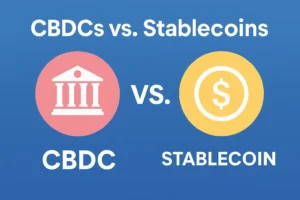Disclaimer: This content is for informational purposes only and does not constitute financial or investment advice. Always do your own research or consult a licensed financial advisor before making investment decisions. Cryptocurrency markets are volatile and carry risks.
Managing a cryptocurrency portfolio can often feel like a high-maintenance task, demanding constant market analysis, timely trades, and strategic adjustments. Given the unpredictable nature of the crypto market, making informed investment decisions requires both expertise and dedication. This is where automated crypto investing steps in, offering a structured, emotion-free approach to portfolio management.
By leveraging automation, investors can streamline their strategies, reduce stress, and focus on long-term growth. Whether you’re a newcomer seeking a hands-off investment approach or an experienced trader refining your strategy, cryptocurrency auto-invest can be a transformative tool.
Crypto Auto Investment Explained

Automated cryptocurrency investing involves setting predefined conditions that dictate asset purchases without manual intervention. Instead of actively executing trades, investors configure parameters such as asset selection, purchase frequency, and investment amounts. The system then autonomously conducts transactions based on these specifications.
One of the most popular strategies in crypto auto-investing is Dollar-Cost Averaging (DCA). This approach involves regularly purchasing a fixed amount of cryptocurrency regardless of price fluctuations. Over time, DCA reduces the impact of market volatility and minimizes the risk of impulsive trading decisions driven by short-term price movements.
How does auto investing work in practice? Most crypto exchanges offer auto-invest features that allow users to set up recurring purchases. Some platforms even provide API access, enabling developers to create customized trading bots and integrate auto-invest strategies into fintech applications.
For traders, crypto auto-investment simplifies portfolio management by ensuring consistent asset accumulation. For developers, it presents an opportunity to explore algorithmic trading, API integration, and automated strategy testing.
How Auto Investment Helps Improve Portfolio Management of Crypto Developers
| Aspect | Impact of Auto Investment |
|---|---|
| Consistent Contributions | Automates regular investments into crypto assets, promoting disciplined savings habits. |
| Time Efficiency | Reduces time spent manually managing trades and allocations. |
| Risk Diversification | Automatically allocates funds across multiple assets to reduce risk exposure. |
| Emotion-Free Decisions | Removes emotional bias from trading, minimizing impulsive buying or panic selling. |
| Market Volatility Management | Enables dollar-cost averaging, smoothing out the impact of short-term market volatility. |
| Custom Strategy Execution | Allows developers to program or select strategies that align with their long-term goals. |
| Performance Tracking | Integrated analytics enable real-time monitoring of portfolio health and ROI. |
| Security and Automation | Uses smart contracts or API integrations to secure and automate investment activities. |
Developers thrive on automation, and crypto auto-invest is a prime use case for building efficient, rule-based systems. By leveraging automation, developers can:
- Design backend trading services that execute automated purchases based on real-time market conditions.
- Develop custom bots that execute DCA strategies to make steady portfolio growth.
- Enhance risk management models by integrating automated investment strategies with predictive analytics.
Leading exchanges provide API access, allowing developers to create customized investment solutions tailored to their specific needs. APIs offer several advantages, including:
- Real-time data access. Fetching market trends, asset performance, and portfolio insights.
- Trade automation. Placing buy/sell orders programmatically, eliminating the need for manual intervention.
- Customized dashboards. Developers can create personalized interfaces to track investments and dynamically adjust settings.

Developers interested in financial modeling can leverage historical data analysis to optimize auto-investment strategies before deploying them in live markets. Features like backtesting tools allow developers to simulate different scenarios and evaluate how a given strategy would have performed under varying market conditions.
Some exchanges offer built-in backtesting features, while others provide API integrations that enable external modeling and strategy refinement. This makes it easier to create automated systems that enhance the management of crypto traders.
Real-world applications for developers:
- Building investment bot: Developers can program bots to execute automated investment strategies, incorporating features such as dynamic DCA or AI-based risk assessments.
- Fintech app integration: Many crypto startups integrate auto-investment features into their fintech platforms, providing users with passive investment options.
- Data analytics for portfolio optimization: Developers can utilize data analytics tools to evaluate portfolio performance, refine automated investment strategies, and improve the user experience.
Cryptocurrency auto-invest is more than just a convenience; it’s a powerful tool that enhances portfolio while reducing emotional trading decisions. For traders, it simplifies the investment process, ensuring consistent asset accumulation. For developers, it opens the door to exciting innovations in algorithmic trading, API-based automation, and financial engineering.
With the right tools and strategies, auto-investing can help traders and developers alike build more robust, well-balanced portfolios. Whether you’re a hands-off investor or a fintech innovator, embracing automation in crypto investments can be the key to long-term success.









